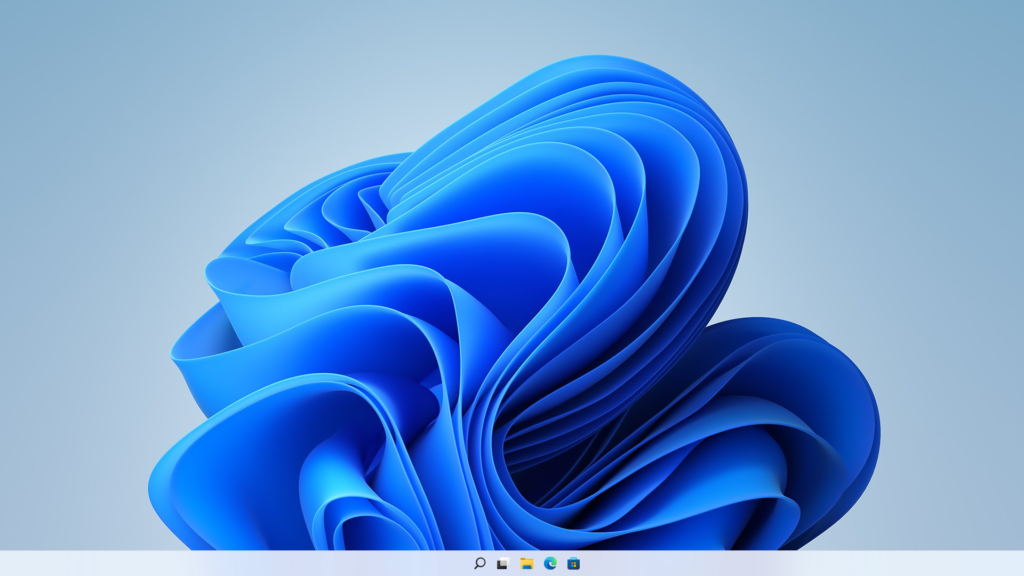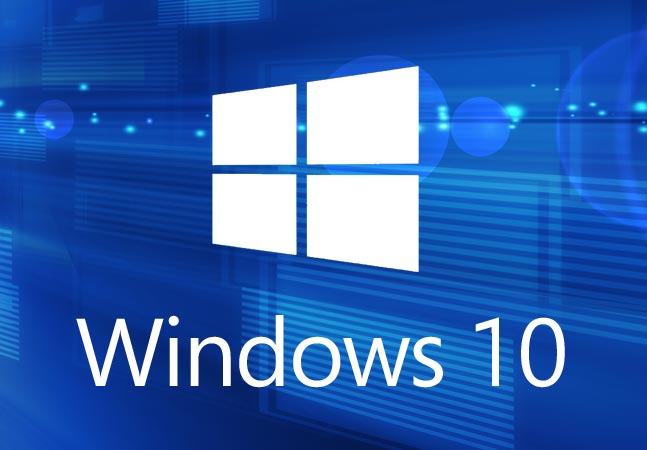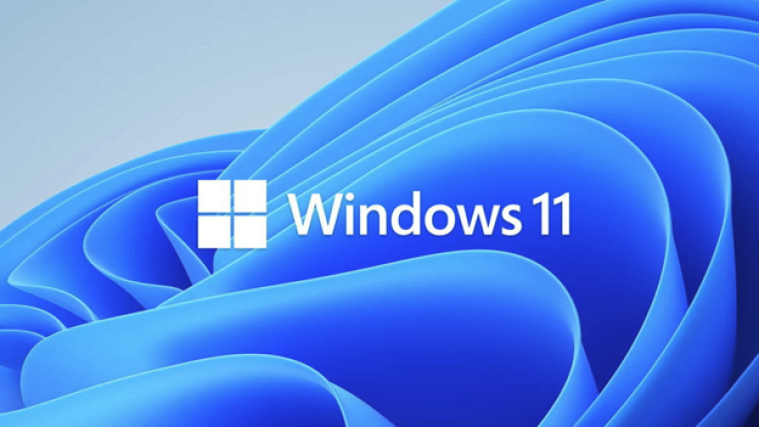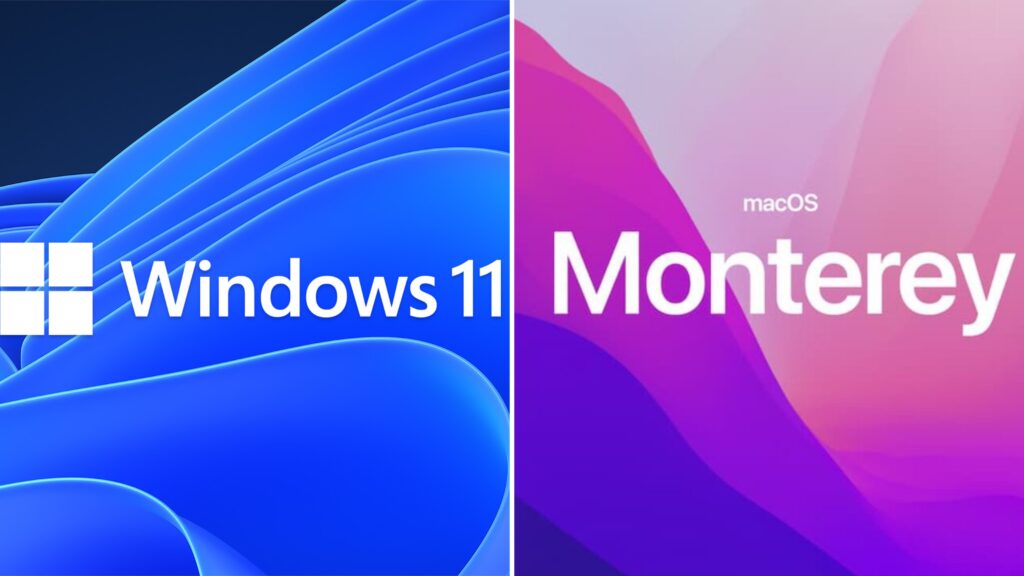All About Windows 11
Windows 11 is the next evolution of Windows OS. This is the foremost important update to the Windows OS since Windows 10. It provides innovation that specializes in improving the work efficiency of end-users during a new photo experience. In supporting today’s mixed working environment, it’s expected to become the foremost reliable, secure, interconnected, and high-performance operating system.
Windows 11 is made on an equivalent foundation as Windows 10, so your investment in updates and device management tools is going to be expanded. Windows 11 also supports the varied application-specific promises of Windows 10, supplemented by App Assure and other Microsoft 365 customers seeking further assistance, FastTrack will still support your efforts to adopt Windows 11.
How to get Windows 11?

Windows 11 is going to be available as an upgrade to eligible devices running Windows 10 and on eligible new devices.
For administrators who manage devices on behalf of their organizations, you’ll be ready to provide existing deployment and management tools like Windows Update for enterprises, Microsoft Endpoint Manager, and Windows Autopilot. Windows 11 will be available through the equivalent, familiar features used in Windows 10 today.
For non-organizationally managed devices, Windows 11 upgrades are going to be provided to eligible Windows 10 devices through Windows Update, using Microsoft’s smart startup process to make sure a smooth upgrade experience.
If you’re curious about testing Windows 11 before its official release, you can join the Windows Insider Program or Windows Insider Program for Business. You can also preview Windows 11 by enabling pre-released Windows 10 feature updates in Microsoft Endpoint Configuration Manager or Windows Server Update Services.
Before you begin
The following section provides a fast summary of licensing, help start, management, and repair considerations for you to use Windows 11.
License
A Microsoft 365 license that has a Windows 10 license will allow you to run Windows 11 on supported devices. If you’ve got a premium license, it’ll also apply to Windows 11 and Windows 10 devices that are upgraded for a short time.
Compatibility
Windows retains the appliance support programs for Windows 10, and there’s no got to change existing processes or tools to take care of the circulation of applications and devices. Microsoft 365 customers can still use App Assure and FastTrack to support IT departments in adopting and maintaining Windows 11.
Familiar process
Windows 11 is made on an equivalent foundation as Windows 10. Generally, you’ll use equivalent tools and solutions that you simply use today to deploy, manage, and protect Windows 11. Your current management tools and processes are completed to manage monthly quality updates for Windows 10 and Windows 11.
Servicing Windows 11
Like Windows 10, Windows 11 will receive quality updates monthly. However, it’s filled with new feature update rhythms. Windows 11 feature updates are going to be released once a year.
When Windows 11 is officially released, you’ll find important information about the service and related known issues and protection measures within the Windows Version clinic.
Windows 11 requirements
Hardware requirements
To install or upgrade to Windows 11, the device must meet the subsequent minimum hardware requirements
- Processor: 1 GHz or faster, with two or more cores on a compatible 64-bit processor or system on chip (SoC).
- RAM: 4 GB or more.
- Storage space: 64 GB* or more of free space for storing is required to put in Windows 11.
- Downloading updates and enabling certain features may require additional space for storing.
- Graphics card: Compatible with DirectX 12 or higher, with WDDM 2.0 driver.
- System firmware: UEFI, supports secure boot.
- TPM: Trusted Platform Module (TPM) version 2.0.
- Display: High-definition (720p) display, 9″ or larger display, 8 bits per color channel.
- Internet connection: Internet connection is important to perform updates, downloads, and use certain functions.
- Windows 11 Home Edition requires an online connection and a Microsoft account to finish the device found out the primary time you employ it.
* Over time, there could also be additional update requirements and enable specific features within the OS.
Operating system requirements

For the simplest Windows 11 upgrade experience, eligible devices should be running Windows 10 version 20H1 or higher.
*Notes: S mode is merely supported on Windows 11 Home Edition. If you’re running a special version of Windows in S mode, you would like to modify out of S mode before upgrading.
Switching the device out of Windows 10 in S mode also requires an online connection. If you exit S mode, you’ll not be ready to switch back to S mode in the future.
Feature-specific requirements
The requirements for a few features in Windows 11 exceed the wants listed above. Please ask for the subsequent list of features and related requirements.
- 5G support: A modem that supports 5G is required.
- Auto HDR: Requires HDR display.
- BitLocker to Go: A USB flash drive is required. This feature is out there in Windows Pro and better.
- Client Hyper-V: Requires a processor with second-level address translation (SLAT) capabilities. This feature is out there within the Windows Pro version and better.
- Cortana: Requires a microphone and speakers, currently available for Windows 11 in Australia, Brazil, Canada, China, France, Germany, India, Italy, Japan, Mexico, Spain, the UK, and therefore us.
- DirectStorage: NVMe SSD is required to store and run games that use standard NVM Express controller drivers and DirectX12 GPU that supports Shader Model 6.0.
- DirectX 12 Ultimate: For supported games and graphics chips.
- Presence: The sensor is required to detect the space between the person and therefore the device or the intention of interacting with the device.
- Intelligent video conference: camera, microphone, and speaker (audio output) are required
- Multiple voice assistants: a microphone and speakers are required.
- Snap: The three-column layout requires a screen width of 1920 effective pixels or more.
- Mute and unmute: need a camera, microphone, and speaker (audio output) from the taskbar. the appliance must be compatible with the function to enable global mute/unmute.
- Spatial sound: got to support hardware and software.
- Microsoft Teams: Camera, microphone, and speakers (audio output) are required.
- Touch: A screen or display that supports multi-touch is required.
- Two-factor authentication: Requires a PIN, biometrics (fingerprint reader or light-emitting infrared camera), or a Wi-Fi or Bluetooth-enabled mobile.
- Voice Typing: PC with microphone is required.
- Voice wake-up: a contemporary standby power model and microphone are required.
- Wi-Fi 6E: Requires new WLAN IHV hardware and drivers, and an AP/router that supports Wi-Fi 6E.
- Windows Hello: got to configure a camera or fingerprint reader for near-infrared (IR) imaging for biometric identification. Devices without a biometric sensor can use Windows Hello with a PIN or a transportable Microsoft compatible security key.
- Windows Projection: A display adaptor that supports Windows Display Driver Model (WDDM) 2.0 and a Wi-Fi adapter that supports Wi-Fi Direct is required.
- Xbox app: Requires Xbox Live account, not available altogether regions. Please attend the Xbox Live country and region page for the newest information on availability. Certain features within the Xbox app require a legitimate Xbox Game Pass subscription.
Plans for Windows 11
Deployment planning
Since Windows 11 is made on an equivalent foundation as Windows 10, you’ll use equivalent deployment features, scenarios, and tools, also because of the same basic deployment strategies you employ for Windows 10 today. You need to review and update your service policy to accommodate changes in Windows 11 service and support.
At a high level, the strategy should include the subsequent steps:
- Create a deployment plan
- Define preparation standards
- Assess infrastructure and tools
- Determine application readiness
- Define your service strategy
Determine eligibility
As a primary step, you need to understand which of your current devices meet the Windows 11 hardware requirements. Most devices purchased within the past 18-24 months are going to be compatible with Windows 11. Verify that your device meets or exceeds the Windows 11 requirements to make sure it’s compatible.
Microsoft is currently developing analysis tools to assist you to evaluate your device against Windows 11 hardware requirements. When Windows 11 is officially released, end-users running Windows 10 Home, Pro, and Pro for Workstations are going to be ready to use the PC checkup application to work out whether or not they are eligible for Windows 11. End users running Windows 10 Enterprise and Education editions should believe their IT administrators to allow them to know once they are eligible to upgrade.
Organizations that want to assess equipment readiness in their environment can expect to integrate this functionality into existing Microsoft tools, like endpoint analysis and update compliance. This feature is going to be available when Windows 11 is fully available. Microsoft is also working with software publishing partners to facilitate the addition of Windows 11 device support to their solutions.
Windows 11 availability
The availability of Windows 11 will vary counting on the hardware of the device and whether the device receives updates directly or from a management solution maintained by an IT administrator.
Managed device
Managed devices are devices that are controlled by the organization. Managed devices include devices managed by Microsoft Intune, Microsoft Endpoint Configuration Manager, or other endpoint management solutions.
If you manage devices on behalf of your organization, you’ll be ready to use your existing deployment and management tools to upgrade eligible devices to Windows 11 for free of charge when the upgrade reaches general availability. Organizations using Windows Update for Business will get additional benefits such as:
- Ensure that devices that don’t meet the minimum hardware requirements won’t automatically provide Windows 11 upgrades.
- Insights about safeguard hold. Although protection reservations function an equivalent for Windows 11 devices as they are doing for Windows 10 today, administrators using Windows Update for Business will have access to information about which protection reservations prevent individual devices from upgrading to Windows 11.
If you employ Windows Update for Business today to manage feature update deployments, you’ll get to leverage target version strategies rather than feature update delays to maneuver from Windows 10 to Windows 11. Delays are great for quality updates or moving to a more modern version of an equivalent product (for example, from Windows 10 version 20H2 to 21H1), but from Windows 10 to Windows 11, they still can’t migrate devices between products.
In addition, Windows 11 features a new end-user license agreement. If you employ Windows Update for the target version of the enterprise or deploy using Windows Server Update Services, you accept this new end-user license agreement on behalf of end-users in your organization.
Unmanaged device
Unmanaged devices are devices that aren’t managed by the IT administrator on behalf of the organization. For OS deployment, these devices aren’t subject to organizational policies governing upgrades or updates.
Starting later within the 2021 civil year, Windows 11 is going to be available to eligible Windows 10 devices. The message on the new device will vary from PC manufacturer to PC manufacturer, but users will see a label like this PC will be upgraded to Windows 11 once it is available on the product available for purchase.
Windows 11 upgrades will be provided on eligible unmanaged devices for Windows users to manually upgrade. As with all Windows Update managed devices, the Windows Update settings page will confirm when the device is eligible, and the user can choose to upgrade.
Just like Windows 10, an intelligent rollout process supported by machine learning is going to be used when rolling out upgrades. Machine learning combines close partner participation, testing, feedback, real-life insights, and diagnostic data to manage quality. This process improves the update experience and ensures that the device that’s nominated for the update first is that the one that will have a seamless experience. Upgrading devices which will are compatible issues can resolve these issues before providing the upgrade.
Windows 11 preparation considerations

The recommended thanks to determining whether your infrastructure, deployment process, and management tools are ready for Windows 11 is to hitch the Windows Insider program for businesses. As a participant within the release preview channel, you’ll verify that your device and application are working and explore new features.
Consider migrating to cloud-based mobile device management (MDM) when planning an endpoint management strategy for Windows 11. If a pure cloud approach isn’t yet suitable for your organization, you’ll still modernize and simplify the essential parts of your endpoint management strategy as follows:
● Create a cloud management gateway (CMG) to manage Configuration Manager clients over the web.
● Use tenant attachment to connect your existing configuration management assets to the cloud so that you’ll manage all devices from within the Microsoft Endpoint Manager management center.
● Use co-management to simultaneously manage devices that use Configuration Manager and Microsoft Intune. this enables you to require advantage of cloud-supported features, like conditional access.
The launch of Windows 11 is additionally an honest time to review your hardware update plan and prioritize eligible devices to make sure the simplest experience for your users.
Service and support

In addition to the end-user experience and security improvements, Windows 11 also improves Microsoft’s service methods supported by your suggestions and feedback.
Quality updates: Windows 11 and Windows 10 devices will receive regular monthly quality updates to supply security updates and bug fixes.
Feature update: Microsoft will provide a Windows 11 feature update per annum, and therefore the goal is to release it within the last half of every civil year.
The life cycle:
- Windows 11 Home Edition, Professional Edition, Workstation Professional Edition, and Education Edition Professional Edition will receive support for twenty-four months from the date of the official release.
- The enterprise and education editions of Windows 11 will provide 36 months of support from the date of the official release.
When Windows 11 is officially released, a consolidated Windows 11 update history is going to be available on support.microsoft.com, almost like the update history available for Windows 10 today. Similarly, the Windows Publishing clinic will provide quick access to Windows 11 service announcements, known issues, and safeguards.
The organization must have enough time to plan for Windows 11. Microsoft also recognizes that a lot of organizations will mix Windows 11 and Windows 10 devices in their ecosystem. By 2025, devices using the Windows 10 service version will still receive monthly Windows 10 security updates and incremental improvements to Windows 10 to support ongoing Microsoft 365 deployments.
App compatibility
Microsoft’s commitment to compatibility with Windows 10 applies to Windows 11. Data from the App Assure program shows that the Windows 10 compatibility rate of enterprise organizations exceeds 99.7%, including line-of-business (LOB) applications. Microsoft remains committed to making sure that the applications you depend upon still work needless to say once you upgrade. For feature and quality updates, Windows 11 is subject to equivalent application compatibility verification requirements that apply to Windows 10 today.
Application assurance and testing library for Microsoft 365
If you encounter compatibility issues or want to make sure that your organization’s applications are compatible from the beginning, Microsoft 365’s App Assure and Test Base can help.
App Assure: After registering for the App Assure service, any application compatibility issues you find in Windows 11 will usually be resolved. Microsoft will assist you to solve application problems free of charge. Since 2018, App Assure has evaluated nearly 800,000 applications, and eligible customers with quite 150 seats can subscribe for free of charge.
Microsoft 365 test library
For software publishers, system integrators, and IT administrators, the Microsoft 365 test library (currently privately preview) may be a service that permits you to verify your Azure environment managed by the appliance Microsoft. Business organizations also can nominate their software publishers to participate by filling out a brief form.
You may have used App Assure and Test Base during a Windows 10 environment. These two tools will still run in Windows 11.
Get ready for Windows 11
Windows 10 and Windows 11 are designed to coexist. Therefore, you’ll use equivalent familiar tools and processes to manage both operating systems. Employing a single management infrastructure that supports common applications across Windows 10 and Windows 11 helps simplify the migration process. you’ll analyze endpoints, determine application compatibility, and manage Windows 11 deployment in the same way as Windows 10.
After evaluating your hardware to ascertain if it meets the wants of Windows 11, now’s an honest time to review your deployment infrastructure, tools, and overall endpoint and update management process, and appearance for opportunities to simplify and optimize. this text provides some useful guidance to accomplish these tasks.
Infrastructure and tools
Tools used for core workloads during Windows 10 deployment are still available for Windows 11. Some nuances are described below.
Be sure to consult the provider of any non-Microsoft solutions you employ. Verify the compatibility of those tools with Windows 11, especially if they supply security or data loss prevention features.
On-premises solutions
- If you employ Windows Server Update Service (WSUS), you would like to synchronize the new Windows 11 product categories. After synchronizing the merchandise categories, you’ll see Windows 11 available as an option. If you would like to verify Windows 11 before release, you’ll also sync the Windows Insider Pre-release category. During deployment, you’ll be prompted to comply with the end-user license agreement on behalf of your users. In addition, you will not see the x86 option because Windows 11 is not supported by the 32-bit architecture.
- If you employ Microsoft Endpoint Configuration Manager, you’ll sync the new Windows 11 product category and begin upgrading eligible devices. If you would like to verify Windows 11 before release, you’ll also sync the Windows Insider Pre-release category. Configuration Manager will prompt you to simply accept the end-user license agreement on behalf of the users in your organization.
Cloud-based solutions
- If you employ the Windows Update Group Policy or Configuration Service Provider (CSP) policy for enterprises, you’ll get to use the target version feature rather than feature update delay to upgrade from Windows 10 to Windows 11. Feature update delay is great for migrating to a more modern version of your current product version (for example, Windows 10, version 20H2 to 21H1), but doesn’t allow you to maneuver between products (Windows 10 to Windows 11).
- The quality update delay will still have an equivalent effect in Windows 10 and Windows 11. this is often true no matter which management tool you employ to configure the Windows update policy that applies to the enterprise.
- If you employ Microsoft Intune and have a Microsoft 365 E3 license, you’ll be ready to use feature update deployment to simply update devices from one version of Windows 10 to a different, or upgrade Windows 10 devices to Windows 11. you’ll also still use equivalent update experience controls that manage Windows 10 and Windows 11.
Cloud management

It is worth considering if you have not yet taken advantage of cloud-based management features, such as those available in Microsoft Endpoint Manager. additionally, to integrating device management and endpoint security into one platform, Microsoft Endpoint Manager also can better support various bring-your-own-device (BYOD) ecosystems which have increasingly become the norm for mixed work scenarios. It also allows you to trace progress supported compliance and business goals while protecting the privacy of end-users.
Here are some common use cases and therefore the corresponding Microsoft Endpoint Manager features that support them:
- Provision and pre-configure new Windows 11 devices: Windows Autopilot enables you to deploy new Windows 11 devices during a “business ready” state, which incorporates the specified applications, settings, and policies. It also can be wont to change the version of Windows. for instance, you’ll upgrade from Pro to Enterprise Edition and use advanced features.
- Configure rules and control settings for users, apps, and devices: once you enroll devices in Microsoft Intune, administrators can fully control the apps, settings, features, and security of Windows 11 and Windows 10. you’ll also use application protection policies to need multi-factor authentication (MFA) for specific applications.
- Simplify device management for front-line, remote, and on-site workers: Cloud configuration is introduced with Windows 10 and maybe a standard and easy-to-manage device configuration that’s cloud-optimized for users with specific workflow requirements. It is usually deployed to devices running Windows 11 Enterprise, Professional, and Education editions using Microsoft Endpoint Manager.
If you exclusively use on-premises device management solutions (such as Configuration Manager), you’ll still use cloud management gateways, enable tenant attachment, or enable co-management with Microsoft Intune. These solutions make it easier to stay equipment safe and up-to-date.
Review service methods and policies
Every organization will make the transition to Windows 11 at its own pace. Microsoft is committed to supporting you as you migrate to Windows 11, whether you are a fast adopter or will be making the transition in the months or years to come.
When you view OS updates as endless processes, you’ll automatically improve your ability to deploy updates. This method allows you to remain up-to-date with less effort and has less impact on productivity. First, consider how you roll out Windows feature updates today: which devices and at what speed.
Next, make a deployment plan for Windows 11, which incorporates deployment groups, rings, users, or devices. there’s no absolute rule for a way many rings your deployment has, but a standard structure is:
- Preview (first or canary): planning and development
- Limited (fast or early adopters): pilot and verification
- Broad (user or critical): widely deployed
Review policies
Review the deployment-related strategies, while considering your organization’s security goals, update compliance deadlines, and device activities. Apply changes where significant improvements are often made, especially regarding the speed or security of the update process.
Verify application and infrastructure
To verify that your applications, infrastructure, and deployment process are ready for Windows 11, join the Windows Insider Program for Business and opt-in to the discharge preview channel.
If you employ Windows Server Update Services, you’ll use one among the subsequent procedures to deploy directly from the Windows Insider Pre-release category:
- Set the management preview version to release preview in Windows Update for Business.
- Take advantage of Azure Virtual Desktop and Azure Marketplace images.
- Download and deploy the ISO from Microsoft’s Windows Insider Program ISO download page.
No matter which method you select, you’ll enjoy free Microsoft support when verifying the pre-release version. Any commercial customer deploying a preview version of Windows 10 or Windows 11 can receive free support through the Windows Insider Program.
Analysis and evaluation tools
If you employ Microsoft Endpoint Manager and have added your device to Endpoint analysis, you’ll be ready to access the hardware readiness assessment later this year. This tool allows you to quickly determine which managed devices are eligible for Windows 11 upgrades.
The desktop analysis doesn’t support Windows 11. you want to use endpoint analysis.
Prepare for a pilot deployment
The pilot deployment may be a proof of concept which will be upgraded to a specific number of production equipment before being widely deployed throughout the organization.
At a high level, the tasks involved are:
- Assign a gaggle of users or devices to receive the upgrade.
- Implement baseline updates.
- Implement operational updates.
- Verify the deployment process.
- Deploy the upgrade to the device.
- Test and support pilot equipment.
- Determine the extensive deployment readiness supported the results of the pilot.
End-user readiness
Don’t overlook the importance of end-users being able to deliver effective enterprise-wide Windows 11 deployments. Windows 11 features a familiar design, but your users will see multiple enhancements to the general interface. They also got to adapt to changes in menus and settings pages. Therefore, consider performing the subsequent tasks to organize Windows 11 for users and IT support staff:
- Create a communication decide to make sure that you provide the proper message to the proper group of users at the proper time supported once they will see the change.
- Draft concise emails to tell users of the changes they will see. Provide recommendations on the way to use or customize their experience. Include information about support and help desk options.
- Update the assistance desk manual with screenshots of the new interface, out-of-the-box experience for brand spanking new devices, and upgrade experience for existing devices.
Summary
This article integrates the windows 11 information, requirements, and preparations for Windows 11 you need. Let us plan for windows 11 with us. ATech would be your support. Contract us now!
About ATech Communication (HK) Limited
We are a leading IT service provider in HK. Focused on business needs, providing solutions, and getting the best return on investment. We are committed to providing cutting-edge IT technologies in order to meet growing customer demand. With the IT infrastructure and application expertise to solve programs, we provide insight and solutions to practical problems before customers face problems. Please visit our Cases page to learn more about our successful works. For more information on ATech, please contact us at enquiry@atechcom.net.
Read more:

ATech Communication (HK) Limited
Providing a Complete Suite of IT Solutions
- (852) 2970 6010 / 3756 0078
- enquiry@atechcom.net


